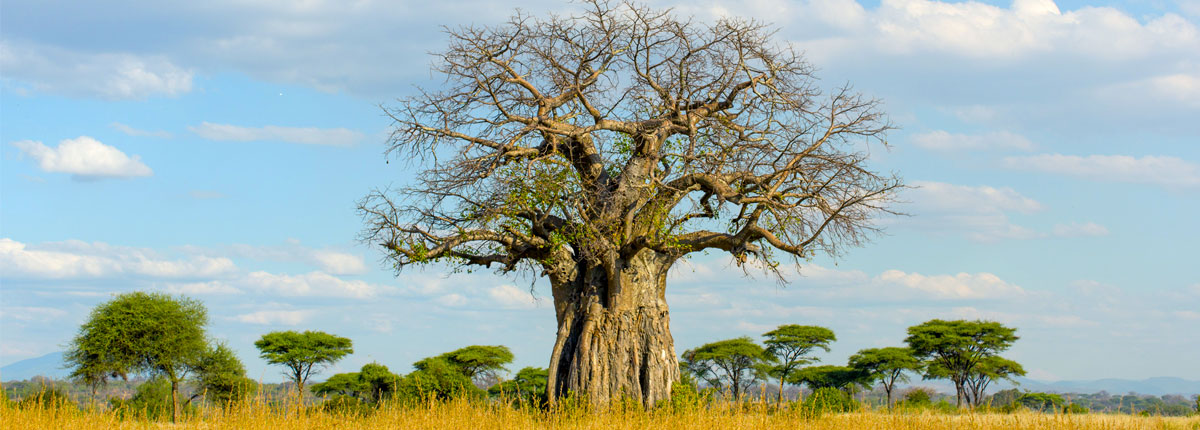Note: All of the following information was gathered from many internet sites including Wikipedia.

Interesting Tanzania superlatives:
- The most continuous record of human evolution during the past 2 million years at Olduvai Gorge: Homo habilis, 1.9 million years ago (mya), Paranthropus boisei 1.8 mya, Homo erectus, 1.2 mya and Homo sapiens, 17,000 years ago.
- The first early evidence of bipedalism at Laetoli: fossilized foot prints that are essentially the same as modern footprints dated to 3.6 mya believed to have been made by an Australopithecus afarensis group. New discoveries in other countries have pushed the date even further back in time.
- Jane Goodall at Gombe discovered for the first time in 1960 in chimpanzees that an animal other than humans was capable of tool use. The same year she discovered chimpanzees hunted for and ate meat; chimpanzees had been believed to be vegetarians. She discovered they fought wars and females learned maternal behavior from others.
- Tanzania is one of the top locations for large populations of wildlife. Ngorongoro Crater, Serengeti National Park and Selous Game Reserve are among the best in the world for the wildlife they protect.
- Tanzania ranks in the top twelve most biodiverse nations with 320 species of mammals, 1200 species of birds, 1400 species of butterflies, and 320 species of reptiles and amphibians and over 10,000 plant species.
- Second (Lake Tanganyika) and fourth (Lake Nyasa or Lake Malawi) largest lakes by volume in the world.
- Highest peak in Africa, Mount Kilimanjaro, 5,895 metres (19,341 ft).
- Africa’s tallest tree, Entandrophragma excelsum, at 81.5 m tall and 2.55 m in diameter growing on the slopes of Mount Kilimanjaro.

The United Republic of Tanzania is an East African country in the African Great Lakes Region. It became a country in April 1964 with the merger of Tanganyika and the Zanzibar Archipelago. It seems ironic that such a young country is the location where humans were first known to have lived 6 million years ago. Some of the oldest remains of the Homo genus were found at Olduvai Gorge, the “Cradle of Humankind.” Homo sapiens originated in this part of Africa and spread to the rest of Africa and the world less than 100,000 years ago. The Hadzabe a hunter-gatherer population living near Lake Eyasi in the central Rift Valley is one of the oldest ethnic groups in the world still living by its ancient traditions. Tanzania has collected immigrants from many parts of Africa including Southern and Eastern Cushitic and Southern Nilotic peoples from the north and more recently Bantu peoples from the west. Others arrived along the coast from Persia, Arabia, India and China. Finally, European colonialists arrived first from Portugal in the late 15th Century and from Germany and Britain in the late 19th and early 20th Century.

The population of Tanzania is over 55 million. Total area is 947,300 sq km, slightly larger than twice the size of California. Nearly half the population is under 15 years due to high birth rate. The population is 99% African and 1% Asian, European, and Arab. The main African group is Bantu with over 130 tribes. The main religions are Christian 61.4%, and Muslim 35.2%. Although its GDP (PPP) ranks 73rd in the world, on a per capita basis it ranks 193 due to the large population. The official language is Swahili and English is the main language of commerce and secondary and higher education.
The eight border countries are Burundi, Democratic Republic of the Congo, Kenya, Malawi, Mozambique, Rwanda, Uganda, and Zambia. Natural resources include hydropower, tin, phosphates, iron ore, coal, diamonds, gemstones, gold, natural gas, nickel. Land uses are 43.7% agricultural, 37.3% forest and 19% other. The nine main food crops are maize, sorghum, millet, rice, wheat, beans, cassava, potatoes, and bananas. The six major cash crops are coffee, sisal, cashew nuts, tea, cotton and tobacco.
Tanzania is tropical and lacks the four seasons of temperate regions. Much of the interior of the country is rather high elevation with a moderate climate, not too hot and not too cold. The Indian Ocean moderates the climate of the coastal zone. Some parts of the country are very dry and others receive abundant rainfall. Rainfall is not well dispersed during the year. There is a rainy season from September to April which is also the warm season and a dry season with almost no rain extends from May through August.

The topography is highly varied including plains along the coast, a central plateau and highlands in north, and south. The mean elevation is 1,018 m, lowest point 0 m at Indian Ocean and highest point 5,895 m at Kilimanjaro (highest point in Africa). The most dramatic feature that shapes the landscape of Tanzania is the East African Rift which is an active continental rift zone that began developing 22-25 million years ago. It is part of a larger rift system that runs from Turkey to Mozambique. The rift marks where the African Plate is splitting into two tectonic plates, the Somali and Nubian Plates. The plates are moving apart at the rate of 6–7 mm annually. The Somali Plate will eventually break off and a new ocean basin will form within 10 million years. At that rate of separation the new open waters could be up to 70 km wide in 10 million years. At present, along the rift zone are very large deep lakes, long steep escarpments, the highest peak in Africa and active volcanoes.








